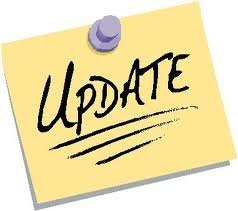Program Update – April 2011
 The Ocean Observatories Initiative (OOI) Program has expanded the size of the program team with the addition of a new Implementing Organization (IO) and made significant progress on a number of technical test and development fronts.
The Ocean Observatories Initiative (OOI) Program has expanded the size of the program team with the addition of a new Implementing Organization (IO) and made significant progress on a number of technical test and development fronts.
We announced in March that Rutgers, The State University of New Jersey, with its partners University of Maine and Raytheon Mission Operations and Services, joined the OOI team as the IO responsible for the education and public engagement (EPE) software infrastructure. The EPE IO will lead the development of educational capabilities for the OOI and leverage the system’s cyberinfrastructure capabilities by constructing a series of software and web-based social networking tools to engage a wide range of users including faculty, graduate and undergraduate students, informal science educators and the general public. Members of the new EPE IO visited the Consortium for Ocean Leadership on March 24-25, kicking off plans for their integration into the program. For more on that team and the meeting click here.
The OOI Coastal & Global Scale Nodes (CGSN) team in mid-March initiated an important test of surface moorings in the ocean off the coast Newport, Ore., and Grays Harbor, Wash., as part of the Endurance Array component of the program. The Endurance moorings are designed to collect continuous ocean observations over the inner-shelf for the projected 25-year lifespan of the OOI program. As part of the OOI development process, the CGSN IO is currently conducting a field engineering and verification test, In Shore Mooring Test 2 (ISMT2), examining a number of mooring subsystems through mooring recovery in July 2011. At-sea observations will be used to assess the static and dynamic performance of the ISMT2 buoy and evaluate the final candidate design. For more information on ISMT2 and photos from the recent test see here.
Meanwhile, our team located at Pacific City, Ore. completed the drilling necessary to install the power and data undersea cable for the Regional Scale Node (RSN) cabled component of the OOI infrastructure. These cables ultimately will link scientists and others in the user community to data streaming from a variety of sensors on the seafloor and through the water column. The first step in the HDD process involved drilling under the beach and surf zone to install two horizontal sub-sea bed conduits running from the beach to an offshore location so that the two cables will remain buried from the offshore location to the beach manhole. The power and data cables are scheduled to be installed through the buried conduits in July 2011. For photos of HDD operations click here.
In other news, a contract was awarded to Teledyne Webb Research of East Falmouth, Mass., to provide coastal gliders supporting the Pioneer and Endurance Arrays. Under the terms of the contract, Teledyne will make necessary design modifications to the company’s “Slocum” glider in order to meet the CGSN specific requirements. Testing and production contracts, including the development of a prototype vehicle, will follow later this year. The first production units are scheduled to be delivered in April 2012.
The OOI Cyberinfrastructure team will complete “Release 1” of the software architecture by early summer 2011, allowing testing of the foundational capabilities of the data distribution system for the OOI.
We continue to moving forward in a number of diverse and challenging areas across the program. The team is staying connected and focused on the jobs at hand. We recently held a project meeting in Washington, D.C., on March 29-31 to review technical progress in all areas of the program to coordinate preparation of materials for the upcoming program review in mid-May. For more information on our team’s progress please continue to visit our program website at: www.oceanobservatories.org
Sincerely,
Tim Cowles
Program Director, Ocean Observing
